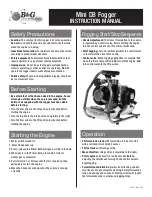
9
WARNING: When using alcohol or alcohol-containing antiseptics with polyurethane PICCs, care should be taken to avoid
prolonged or excessive contact. Solutions should be allowed to completely dry before applying an occlusive dressing.
Chlorhexidine gluconate and/or povidone iodine are the suggested antiseptics to use.
B. Flushing
Caution: Some patients may be hypersensitive to heparin or suffer from heparin induced thrombocytopenia (HIT) and these
patients must not have their catheter locked with heparin flush solution.
1. Flush the catheter after every use, or at least weekly when not in use. Use a 10 mL or larger syringe.
2. Flush the catheter with a minimum of 10 mL of 0.9% sodium chloride, using a “pulse” or “stop/start” technique. Use of
heparin flush solution to lock each lumen of the catheter is optional.
3. Disconnect the syringe and attach a sterile end cap to the catheter hub and tighten securely.
4. Prior to blood sampling when infusing TPN, follow routine maintenance procedure except use 20 mL saline and flush to
clear TPN from the catheter.
5. If resistance is met when flushing, no further attempts should be made. Further flushing could result in catheter rupture
with possible embolization. Refer to institution protocol for clearing occluded catheters.
Note: When injecting or infusing medications that are incompatible, you should always flush the catheter with a
minimum of 10 mL saline before and after the medication.
Note: When maintained in accordance with these instructions, the PowerPICC SOLO
2
® catheter does not require the use
of heparin flush solution to lock the catheter lumens. However, use of heparin flush solution will not adversely effect the
catheter and may be necessary based on patient status or use of alternate flushing and locking techniques.
Caution: To reduce potential for blood backflow into the catheter tip, always remove needles or syringes slowly while
injecting the last 0.5 mL of saline.
Caution: Use aseptic techniques whenever the catheter lumen is opened or connected to other devices.
Caution: The PowerPICC SOLO
2
® catheter is designed for use with needleless injection caps or “direct-to-hub” connection
technique. Apply a sterile end cap on the catheter hub to prevent contamination when not in use. Use of a needle
longer than 1.6 cm may cause damage to the valve.
WARNING: Alcohol should not be used to lock, soak or declot polyurethane PICCs because alcohol is known to degrade
polyurethane catheters over time with repeated and prolonged exposure.
C. Occluded or Partially Occluded Catheter
1. Catheters that present resistance to flushing and aspiration may be partially or completely occluded. Do not flush against
resistance. If the lumen will neither flush nor aspirate and it has been determined that the catheter is occluded with
blood, a declotting procedure per institution protocol may be appropriate.
18. Central Venous Pressure Monitoring
A. Prior to conducting central venous pressure monitoring:
• Ensure proper positioning of the catheter tip.
• Flush catheter vigorously with sterile normal saline.
• Ensure the pressure transducer is at the level of the right atrium.
B. It is recommended that a continuous infusion of saline (3 mL/hr) is maintained through the catheter while measuring CVP to
improve accuracy of CVP results.
C. Use your institution’s protocols for central venous pressure monitoring procedures.
WARNING: CVP Monitoring should always be used in conjunction with other patient assessment metrics when evaluating
cardiac function.
19. Catheter Removal
A. Remove dressing and StatLock® catheter stabilization device or tape securement strips.
Caution: Do not use scissors to remove dressing to minimize the risk of cutting catheter.
B. Grasp catheter near insertion site.
C. Remove slowly. Do not use excessive force.
D. If resistance is felt, stop removal. Apply warm compress and wait 20-30 minutes.
E. Resume removal procedure.
F. Examine catheter tip to determine that the entire catheter has been removed.
References
1
Halpern M.D., Georges. “Allergic and Toxic Reactions.” Adverse Events During Infusion Therapy Symposium, University of
California, Davis School of Medicine. (1993)
2
Findlay, Steven R. et al,. “Hyperosmolar Triggering of Histamine Release from Human Basophils.” Journal of Clinical
Investigation. (1981)
3
Benjamin, Richard J. et al,. “Skin Disinfection with Single-Step 2% Chlorhexidine Swab is more Effective than a Two-Step
Povidone-Iodine Method in Preventing Bacterial Contamination of Apheresis Platelets.” Transfusion. (2010)
4
“FDA Public Health Notice: Potential Hypersensitivity to Chlorhexidine-Impregnated Medical Devices.” FDA U.S. Food and
Drug Administration. <http://www.fda.gov>. (accessed March, 1998).
5
Beaudouin, E. et al,. “Immediate Hypersensitivity to Chlorhexidine: literature review.” European Annals of Allergy and
Clinical Immunology. 36, no. 4 (2004)




























